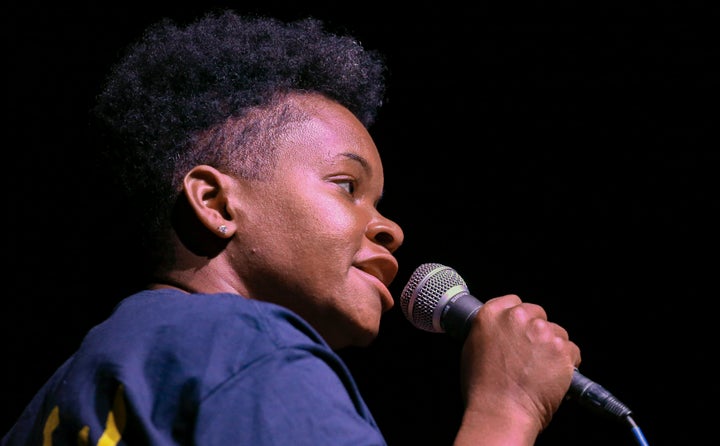
BUFFALO, N.Y. ― As the Buffalo mayoral race entered its final days, Rep. Alexandria Ocasio-Cortez (D-N.Y.) took the stage at a packed Oct. 23 rally for Democratic nominee India Walton.
“It is not enough for us to have victories in legislative bodies,” said Ocasio-Cortez, whose congressional primary win in 2018 sparked a wave of left-wing ferment. “We need to show that we can govern in an executive position.”
Indeed, progressive candidates have had far more success running for seats in Congress, state legislatures or city councils, than winning governorships or mayoral races.
Walton, a registered nurse turned community activist, took a big step toward changing that when she defeated four-term Mayor Byron Brown in a Democratic primary in June.
But Brown, a business-friendly moderate, is mounting a well-funded write-in campaign against Walton in the general election. With the help of Buffalo’s small but significant contingent of Republican and independent voters, polling suggests Brown is now favored to win.
The Walton-Brown race is the rare story of an entrenched incumbent who took voters for granted in the primary and has since run a spirited general election campaign in a predominantly Democratic, though not especially liberal, city. Without a Republican on the ballot, Brown has also had free access to the coffers of Western New York’s Republican and business elite. He’s used those funds to stoke often over-the-top fears about Walton’s inexperience, as well as her plans to raise taxes and cut police funding.
“He’s neglected the East Side. He’s neglected his people.”
- Paul Rhines, Walton supporter
At the same time, whatever the race’s outcome, it has implications for moderate Democrats and progressives across the country. A Walton victory would expand the activist left’s reach into the heart of a centrist, post-industrial city ― a municipality politically and economically closer to, say, Cleveland than to New York City.
A Brown win would speak not just to the peculiar advantages that a general election write-in campaign confers on a centrist incumbent, but also affirm the political limits of the recent leftward shift inside the Democratic Party.
The primary results ― and numerous conversations with Buffalo voters ― show that many Buffalonians want a changing of the guard. But Walton’s lack of government experience, identity as a democratic socialist, and support for cutting the police budget may make enough voters think twice about whether she is the right agent for that change.
“Whether it’s an actual test case or not, it will be used as a test case for democratic socialism or for a more progressive style of candidate and campaign more generally,” said Jacob Neiheisel, a political scientist at the University of Buffalo.
“If it goes well [for Walton], then there’s going to be those on the left saying, ‘Look you can run on these policies and you’ll be just fine,’” he added. “If she loses, then it’s going to be used on the right to say, ‘Look, this is something that even a heavily Democratic city rejected. And they overcame the additional hurdle of writing in somebody who, while still a Democrat, wasn’t that far left.’”

A Legacy With Limits
When Byron Brown took the helm of Buffalo city government in 2006, many Buffalonians greeted him as a breath of fresh air, and not just because he was the famously segregated city’s first Black mayor. Under Brown’s predecessor, Tony Masiello ― a three-term Democrat, who twice endorsed Republican Gov. George Pataki ― the city’s population reached a historic low and the state imposed a fiscal control board that had veto power over the city’s budget.
Brown promised to change all that. He began by seeking to streamline the city’s approval process for new construction, thereby encouraging the redevelopment of Buffalo’s waterfront and downtown areas. It was part of a plan to lure private development back to the city and, in turn, attract more middle-class taxpayers who could help stabilize the city’s finances.
Regardless of whether he deserves full credit for the outcomes, several of Brown’s ideas bore fruit under his watch. In July 2008, Brown welcomed Sen. Chuck Schumer (D-N.Y.) ― who is now backing Walton ― and then-Sen. Hillary Clinton (D-N.Y.) to celebrate the redevelopment of a previously desolate stretch of the Buffalo waterfront. And in 2012, the city exited from under the watchful eye of the state control board, which controlled the city’s finances but now operates in a mostly symbolic, “advisory” capacity.
In August, weeks after Buffalo Democrats decided they’d had enough of Brown, the mayor scored another coup. The U.S. Census found that the city’s population had grown for the first time since 1950, rising from about 261,000 people in 2010 to about 278,000 in 2020. Brown credited his administration’s “strategic efforts to be a welcoming city” for the change.
A number of Buffalonians who remember the pre-Brown era hailed him as a turnaround artist that the city cannot afford to relinquish.
“As we’re righting some of the issues that we’ve had over the last 30, 40, 50 years, we need to stay the course,” said Darnell Cummings, a career counselor from Buffalo’s East Side who attended Brown’s march to the polls on Oct. 23.
“I’m 72 years old. You don’t get anything overnight.”
- Kinzy Brown, supporter of Mayor Byron Brown
Kinzy Brown, a public school teacher from the University District who is not related to the mayor, told a similar tale of city life improving under Brown’s tenure ― even if it’s not fast enough for some of his younger neighbors.
“I’m a Black man. Things come in stages,” he said over drinks at a bar in the Allentown neighborhood. “I’m 72 years old. You don’t get anything overnight.”
But to Walton ― and Brown’s many other critics ― the lengthy résumé that earns so much loyalty in Brown’s supporters is his Achilles’ heel. His run as mayor, which began during the George W. Bush presidency, has long since passed its sell-by date, Brown’s detractors say.
Several voters mentioned Brown’s decision not to campaign during the primary as evidence he had grown complacent.
“He’s been here long enough,” said Monique Mitchell, a homemaker in Schiller Park, who was undecided less than two weeks before the election. “And at some point, you need to give somebody else a chance to see what they can do.”
In nearly 16 years in office, Brown has amassed far more troubling marks on his record as well.
Although Brown has never been charged with a crime, his administration has been the subject of several corruption investigations. The federal government has charged Steve Casey, a former deputy mayor of Brown’s, with trying to defraud a state Senate candidate through a consulting firm he founded while still working for Brown. Casey pleaded guilty to wire fraud in July.
The FBI also raided Brown’s urban renewal agency in 2019. Many of the grants and contracts that Brown doled out through the agency went to major Brown donors, according to a Buffalo News investigation.
“The most important thing for people in Buffalo is transparency and accountability in our city government,” Walton told HuffPost in an interview at her campaign office.
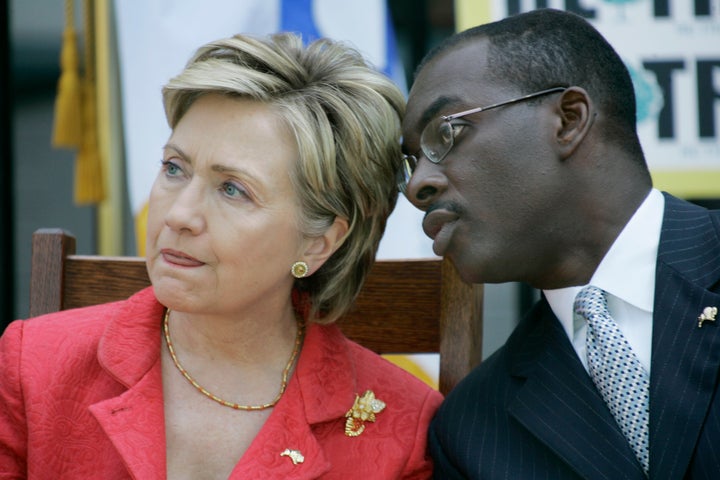
‘A Tale Of Two Cities’
Walton has also pushed the idea that Buffalo’s growth under Brown has either ignored the city’s working-class and low-income residents, or actively come at their expense. It’s what Walton calls Buffalo’s “tale of two cities” ― and one she has experienced firsthand as a formerly impoverished single mother.
Indeed, notwithstanding Buffalo’s improved finances, the city’s poverty rate remained static in the past decade at about 30%, making it the third-poorest large city in the country after Detroit and Cleveland.
That poverty is especially concentrated on Buffalo’s predominantly Black East Side. Given Walton’s strength in the progressive pockets of the city’s West Side, and Brown’s strong support in North and South Buffalo, voters on the East Side could well decide the election.
Paul Rhines, a truck driver who lives in Schiller Park, pointed to the poor state of his neighborhood’s streets and high rate of violent crime ― his daughter’s home was recently burglarized ― as evidence of the city’s inattention to neighborhoods like his.
“He’s neglected the East Side. He’s neglected his people,” said Rhines, referring to Brown’s treatment of the city’s Black population.
In an interview outside his early polling place, Brown rejected charges that he has not adequately prioritized the needs of the East Side, saying there has been “significant attention” given to the area under his administration.
As evidence, he cited his hiring of a racially diverse staff and city workforce, his demolition of thousands of unsalvageable homes that were a blight on the East Side, the construction of 2,200 units of affordable housing, and the reduction of property tax rates.
Walton says 2,200 units is not enough and that much of the private development that Brown facilitated has displaced or disrupted the lives of low-income and working-class East Siders. In particular, she faults Brown for turning over the vacant lots created by his home demolition program to private developers.
“Development has occurred without the meaningful input of residents and our neighborhoods,” Walton told HuffPost. “What my campaign represents is hope for a more equitable and just future.”
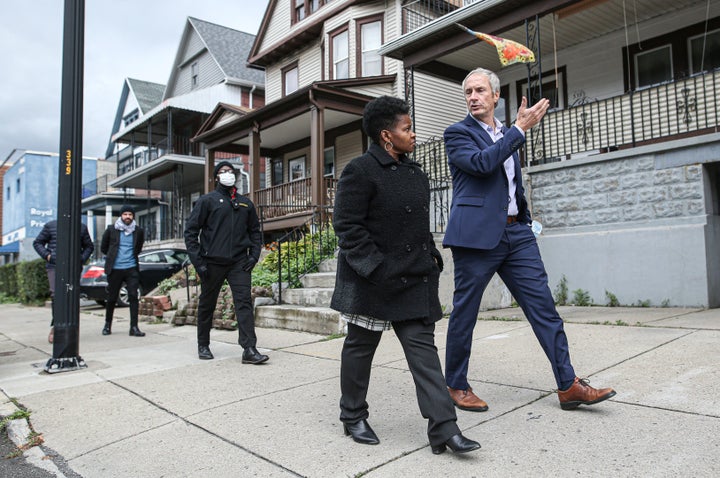
Walton’s experiences as a renter inform her plans. While working as a registered nurse at the Buffalo children’s hospital, Walton leased an apartment in the Fruit Belt. Three years later, she could no longer afford the rent that the landlord wanted to charge so she picked up and left.
Inspired to protect other Fruit Belt residents from the displacement she experienced, Walton became founding executive director of an initiative called the Fruit Belt Community Land Trust. With the help of foundations and some public funding, the nonprofit bought up vacant lots in the Fruit Belt with the goal of turning them into affordable housing units for local residents.
Walton wants to expand the land trust model to other neighborhoods in the city. She is also interested in creating a program for the city to extend “micro-mortgages” to non-traditional borrowers who want to buy homes valued at $50,000 or less.
“Homeownership is the hallmark of neighborhood stabilization and community health,” she said.
But the Fruit Belt Community Land Trust that Walton helped lead is going through a difficult period, creating space for Brown to cast doubt on her role there as a source of executive experience that qualifies her for the city’s top job. In July, the nonprofit backed out of its contract with the city to build 50 affordable housing units in the Fruit Belt, and the land trust’s interim executive director blamed Walton and a former board chair for inking an agreement that was “premature due [to] their inexperience with complex housing projects of this scale,” according to emails obtained by The Buffalo News.
Asked for a response to reporting on the land trust’s withdrawal from the city contract, the Walton campaign provided a statement from Walton suggesting that if her greatest flaw was dreaming too big, so be it.
“There is no question we punched above our weight class,” Walton said. “That’s what you do when you’re trying to change the world!”
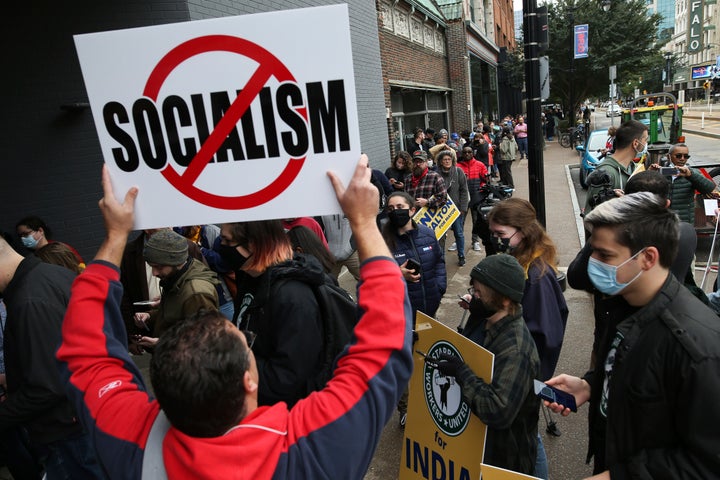
The Third Rail: Police Funding
When Walton won the Democratic primary in June, she sounded like she was already measuring the drapes in City Hall. The formerly impoverished community activist who had her first child at age 14 had already moved on to other races, warning local lawmakers that the wave of progressive wave that toppled Brown would come for them soon enough.
“Today is only the beginning,” Walton told her supporters. “From the very start, this is not about making India Walton mayor of Buffalo, this is about building the infrastructure to challenge every damn seat.”
A few days later, Brown announced his plans for a write-in campaign. At a press conference kicking off the general election race, Brown previewed the kind of attacks that would mark his second, more spirited run against Walton, whom he dubbed a “radical socialist.”
If Walton falls short, it will be in no small part because Brown successfully painted her as both too inexperienced and too radical to govern the city effectively.
In the primary, Buffalonians weren’t “terribly enthusiastic about Brown winning again, but [voters] didn’t really define an alternative,” Neiheisel said. “Now that an alternative has been defined, they may or may not like what they see.”
In a nod to that political reality, Walton has taken steps to sand the left-wing edges off her image and agenda.
The former activist who chanted “fuck these racist-ass police” through a megaphone at a rally against racism and police misconduct last fall, no longer uses the word “defund” when discussing her plans to reduce police funding.
Instead, she speaks about the need to meet voters where they are, even if they are not as “woke” as people steeped in progressive rhetoric.
“We tend to intellectualize a lot of our issues to the point of inaction,” she said. “We do a lot of talking about what is the right thing ... and a lot less about the steps to get there.”
But Walton remains honest about her interest in fundamentally transforming the political system, even if those changes are not attainable in a single four-year term.
She is unapologetic about her election night remarks blessing hypothetical primary challenges against other incumbent Democrats in Buffalo, while clarifying that it was not remotely a priority for her ahead of the general election.
“The way that we combat that is by funding community services, funding mental health services, funding outreach for homelessness, and youth and senior services.”
- India Walton, Democratic nominee for mayor of Buffalo, New York
“I have made this campaign into a training ground for people who are dissatisfied with leadership,” she said. “Primary races happen in New York state for a reason.”
When asked whether she is sympathetic to activists who dream of getting rid of incarceration altogether, Walton said she is.
“I can’t do that as mayor, but I hold that deep down in my heart as an aspiration, and that is what helps inform and guide a lot of our policies,” she said. “I am pragmatic enough to be realistic enough to say that we’re not there yet.”
Some of Brown’s attacks against Walton have been unfair and inaccurate. For example, he said during the first debate that her proposed 3% increase in residential property taxes would cost Buffalonians with a $100,000 home $300 more in annual taxes. In fact, the tax hike, which she would phase in gradually and plans to use to shore up snow removal services, would cost homeowners an extra $30. Walton would also have the city refund the revenue it collected from the now-discontinued use of speed cameras in school zones, which she and other critics consider a regressive tax.
Brown also aired a misleading TV ad about Walton’s proposed reduction of $7.5 million from the annual police budget, accusing her of planning to fire 100 police officers. The 30-second spot featured mostly Black and female police officers lamenting that as younger recruits, seniority rules would force the city to get rid of their jobs first.
Walton, whose plan is based on a proposal by the left-leaning Partnership for the Public Good, promises that she would not fire a single officer. She vows instead to find the savings by encouraging older officers to retire and reducing excess spending on overtime hours.
By building up non-police alternatives for mental health calls and traffic stops, Walton insists that she would actually free up police resources to focus on violent crime. And the money the city would save under her proposed spending cuts could go toward programs that Walton believes attack the root causes of crime.
“The way that we combat that is by funding community services, funding mental health services, funding outreach for homelessness, and youth and senior services,” Walton said.
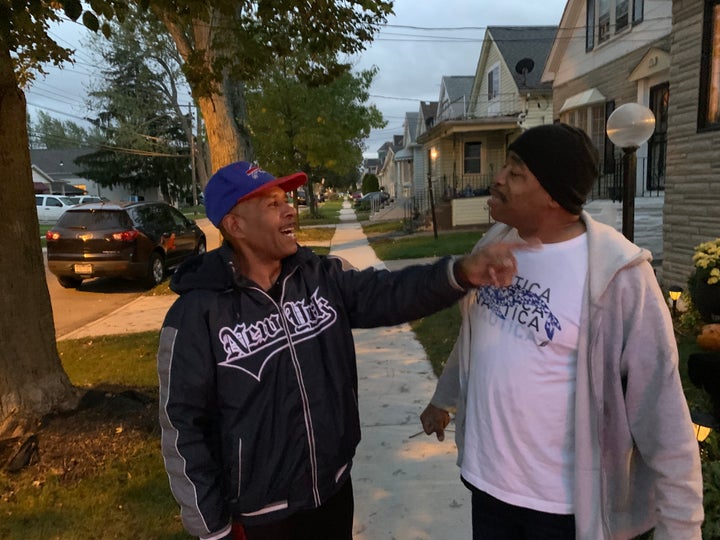
But even in a city where the police force pushed an elderly man to the ground in June 2020, resulting in a brain injury and lengthy hospital stay, Walton’s support for any kind of concrete police funding cut is a political liability. She is seeking a cut that amounts to nearly 9% of the police department’s budget this fiscal year, and it is indeed unclear what kind of flexibility she would have to achieve those savings in light of the police union’s collective bargaining agreement.
A new Emerson College poll that came out Tuesday found that while just 19% of Buffalo voters support reducing the police budget, more than 47% of voters said they support “redirecting police funding” toward funding social workers, mental health response teams and other non-police services.
Still, the nuances of Walton’s position are lost on some residents of high-crime neighborhoods who might otherwise be inclined to vote for her.
Mitchell, the Schiller Park homeowner, expressed her concerns about the proposed cuts to Walton campaign volunteer Gerhardt Yaskow, who was knocking on doors in her neighborhood. Yaskow told her the reduction in the size of the police force would be, at most, 50 people.
Mitchell was unconvinced. “Why take food out of an officer that’s doing the right thing? There are going to be collateral damages in the decisions that are made,” she told HuffPost. “And it could be the good” cops who suffer.
Down the block, Paul Rhines was having trouble convincing his friend Andy Pleasant, an auto mechanic and flea market clerk, that the need for change was urgent enough to give Walton a chance.
Pleasant, like Rhines, believes that Brown has not done enough for the East Side, but one of his complaints about Brown is the slow pace of police responsiveness in their part of the city. He worries that with less money, police services would worsen further still.
Reducing police funding is “the last thing we need,” he said. “That’s the only reason I would not vote for her.”
